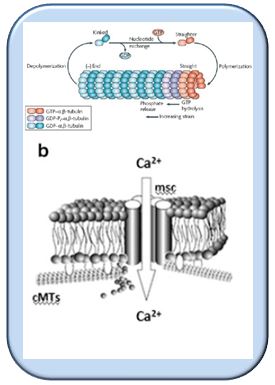Microtubules as thermometer
42. Abdrakhamanova A, Wang QY, Khokhlova L, Nick P (2003) Is microtubule assembly a trigger for cold acclimation? Plant Cell Physiol 44, 676-686 (140 quotations, state 17.02.2022) - pdf
What is the topic? Winter wheat is sown in autumn and can survive the winter by virtue of its freezing tolerance as small seedling, which allows to exploit the sufficient sun light during early spring for photosynthesis, such that winter wheat can be harvested two months earlier. The development of winter wheat was one of the central factors for Industrial Revolution, because it closed the seasonal subsistence gap. Before - people typically suffered from starvation during late spring, when the provisions from the previous year had been used up. In this work the role of microtubules for cold acclimation of winter wheat is investigated. We show that early disassembly of microtubules is necessary and sufficient to induce cold hardening. By transient elimination of microtubules at a specific time point, we can induce cold hardening. This allows to render sensitive wheat varieties ("soft guys") as freezing resistant as the "tough guys" from Siberia. These findings show that microtubules, in addition to their structural role, are employed as thermometers of plant cells.

